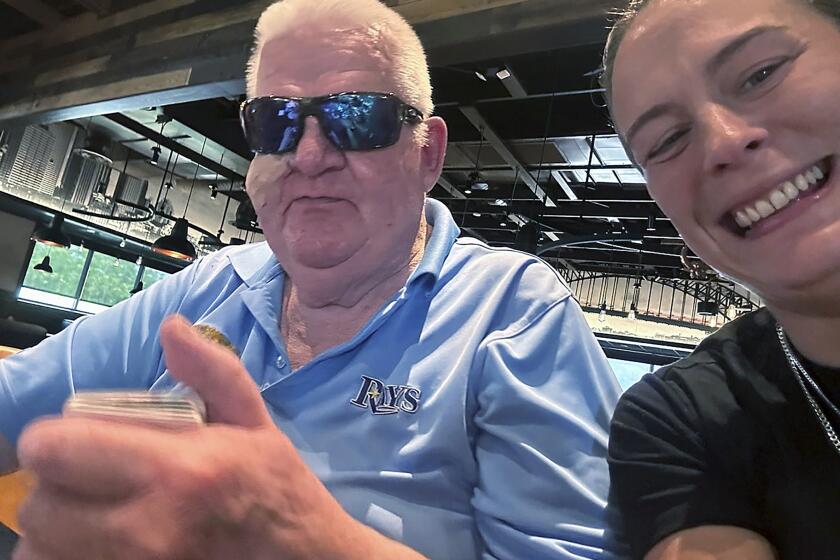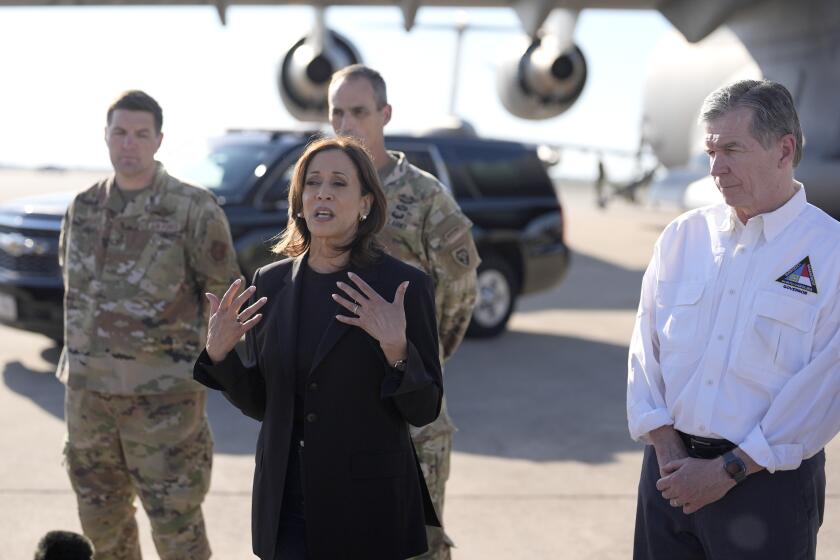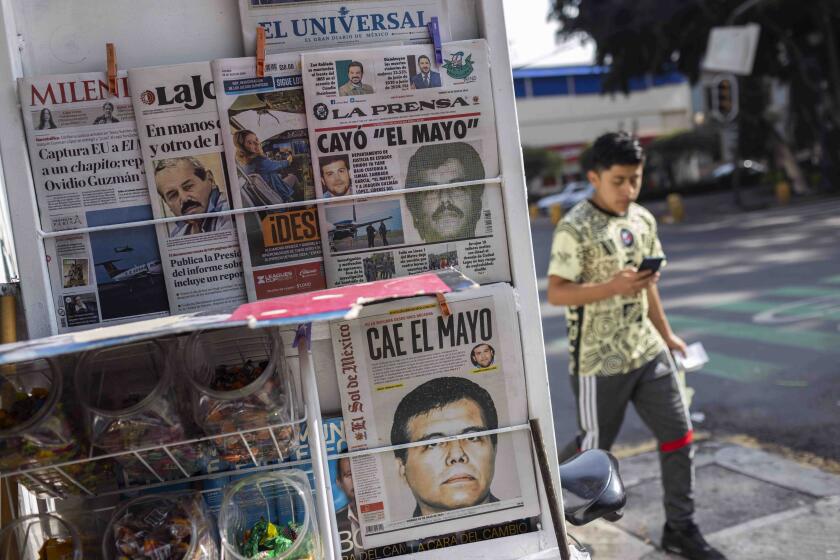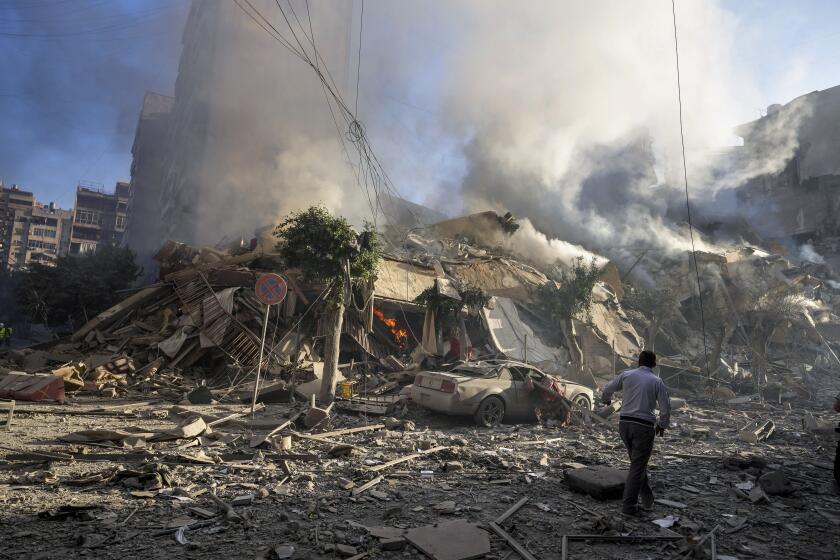Doubt Is Cast on Iraq’s List of Chemical Arms
Iraq has substantially under-reported the quantity of chemical weapons remaining in its stockpiles and still possesses a significant capacity to produce new chemical arms, according to Bush Administration officials and private experts.
The list Baghdad supplied to the United Nations earlier this month detailing its chemical-weapons supply may have understated the total stockpile by as much as 25%, at least in some categories, according to one senior government analyst.
More importantly, Baghdad appears to be attempting to entirely hide stockpiles of two deadly nerve agents--Tabun and VX--that both the Administration and European governments believe the Iraqi regime has been developing.
In its official list, Iraq claims to have no stocks of either chemical, but Tabun is widely believed to have been used against Iran during the final stages of the eight-year Iran-Iraq War. Iraq has never used VX, a complex and unusually long-lasting nerve gas, but officials are convinced it has developed the chemical.
“There are clearly discrepancies” between the Iraqi list and what intelligence reports show, an Administration official said. “No one can say if they are doing it because they’re just bad guys or because they’re up to something. But to us, what’s important is that they are under-reporting.”
In addition to allegedly under-reporting the chemical stocks, Iraq also is claiming that it has neither a nuclear-weapons development program nor research, development and production facilities for biological weapons.
U.S. and European intelligence experts have long insisted that Iraq has both capabilities.
There is no proof that Iraq has used biological weapons. Many military experts doubt, in fact, that such weapons actually could be made to work at all, particularly in the dry, desert conditions of the Middle East. Nonetheless, three years ago, Kurdish refugees insisted that Iraq had used biological agents against the town of Sulaymaniyah and in resettlement camps as it crushed the Kurdish rebellion of 1988. And U.S. officials say they have no doubt that Hussein has tried to build a biological-weapons capability.
The International Atomic Energy Agency already has rejected as inadequate Iraq’s report on its nuclear facilities and has insisted that Iraq report on the location and condition of enriched uranium it was known to have on hand before the Gulf War. On Friday, an Iraqi diplomat in Vienna, where the energy agency has its headquarters, said his country will comply with the IAEA demand but did not say when.
Another notable omission from Iraq’s list is production plants. At least two major facilities, one a key research and development site for both chemical and biological weapons at Salman Pak and the other a massive complex at Samarra, were omitted from Iraq’s list. The facility at Samarra, north of Baghdad, is a huge complex covering 10 square miles that was built in the early 1980s with private German help. It is believed to be Iraq’s largest chemical-weapons production facility.
“Unless plants were totally obliterated, good engineers can start reconstructing things quickly,” said Seth Carus, a chemical-weapons specialist at the Washington Institute for Near East Policy. In particular, Carus said, Iraq could quickly resume production of comparatively simple chemical agents such as mustard gas, which killed thousands of soldiers during World War I.
A senior U.S. analyst concurred with that judgment, saying of Hussein’s regime that “if they wanted to make more, they could, although not in the same quantities. Not everything has been destroyed.”
Both U.S. officials and private analysts suggest that Hussein and his aides may be trying to hoard non-conventional weapons stocks for possible use against internal opponents in the event of future uprisings. The Baghdad regime “toyed with the idea” of using chemical weapons against Kurdish rebels in early March but backed off in the face of stern warnings from Western governments, officials say.
In addition, Iraq may be focusing attention on the possibility of a renewed conflict with its traditional enemy, Iran, officials fear. U.S. analysts have noted an alarming increase in the level of belligerent rhetoric coming from both Tehran and Baghdad over the last month and believe that fighting between the two countries, at least at a low level, could resume.
The type and degree of angry statements are “reminiscent of 1980,” when the Iran-Iraq War began, one government Middle East expert said. “It’s the same thing.”
“People look at it and say, ‘These are two war-weary countries,’ ” neither of which would want to go to war, the official said. “But in 1980, people were making the same arguments.”
The possibility of fighting between the two most powerful countries in the Gulf would vastly complicate the Administration’s task in trying to stabilize the region. In the 1980-88 war war, the United States and its European allies backed Hussein as a defense against Iran’s Ayatollah Ruhollah Khomeini, whose radical Shiite Muslim regime was seen as a threat by the conservative, Sunni Muslim monarchies of the Gulf.
Although the United States has just finished a major war against Hussein’s regime, some of America’s chief allies in that conflict, most notably Saudi Arabia, might still back Iraq if fighting began against Iran.
Even if that possibility--what one analyst dubbed the “back to the future” scenario--does not come about, Iraq’s apparent attempts to hide chemical weapons are worrisome to experts on the region. The efforts suggest that the U.N. teams expected to visit Iraq to inspect facilities and oversee the destruction of chemical arms may meet considerable resistance.
“His stockpiles were widely dispersed before the war,” said one government expert on the subject. “He knew this was coming.”
More to Read
Sign up for Essential California
The most important California stories and recommendations in your inbox every morning.
You may occasionally receive promotional content from the Los Angeles Times.











